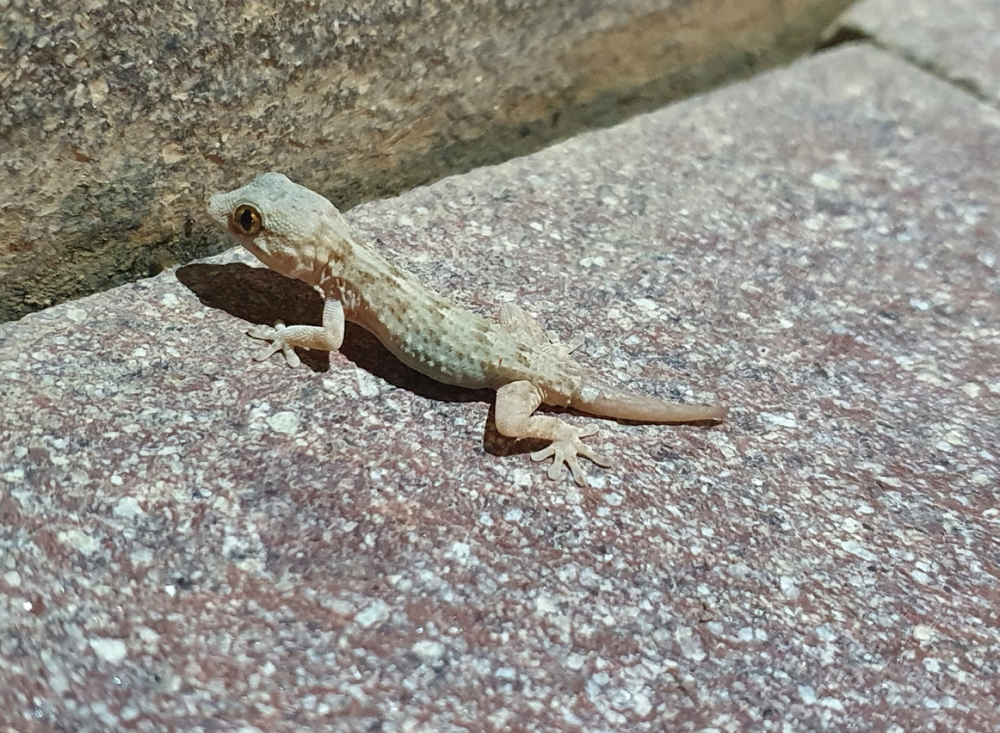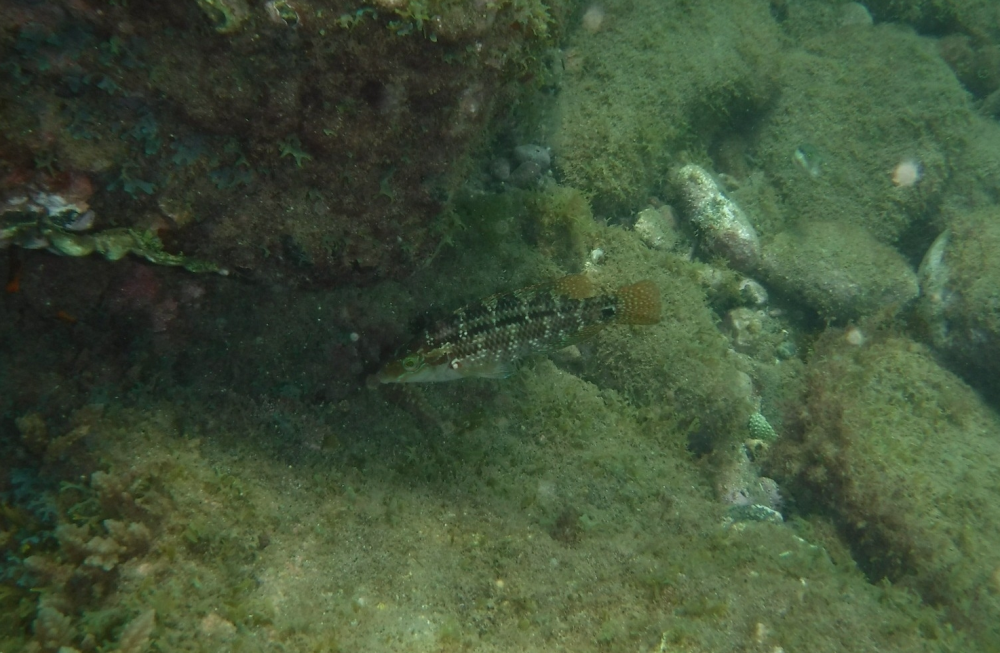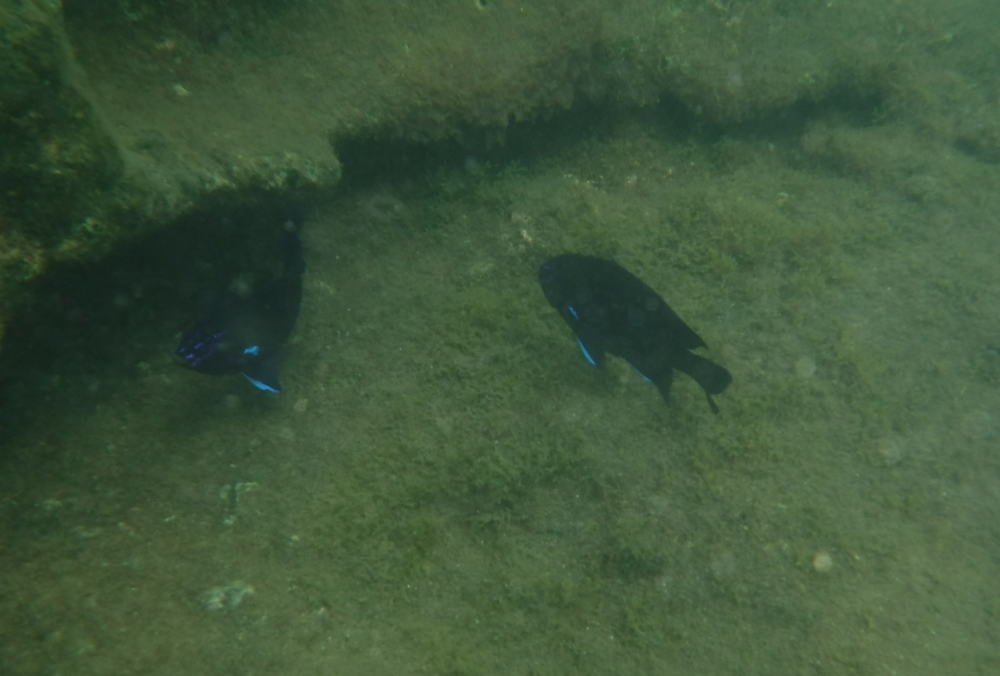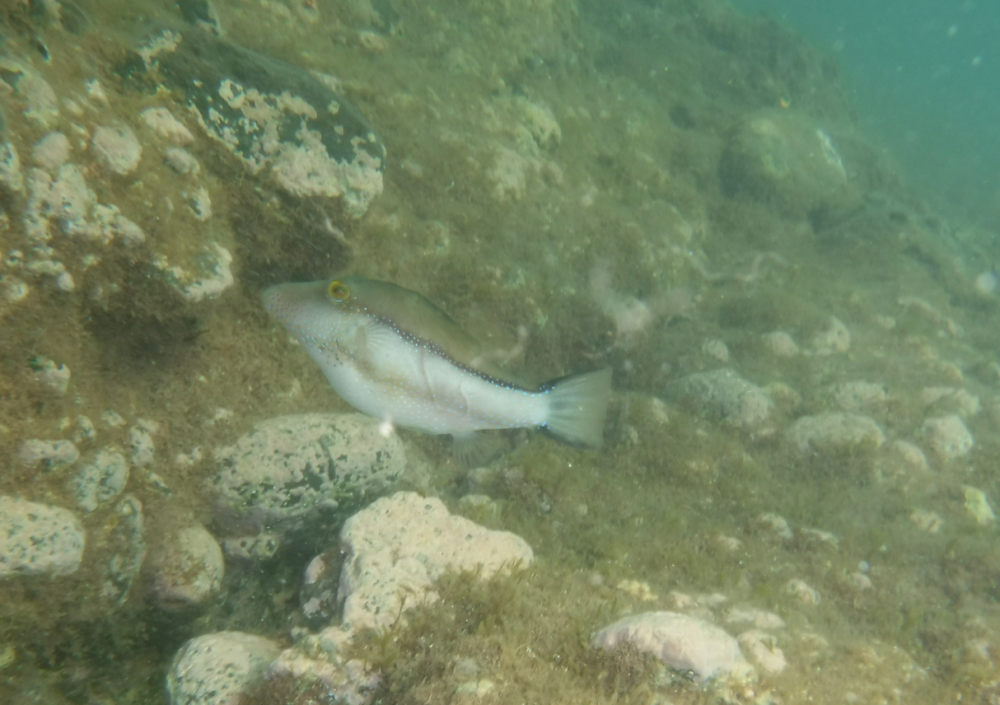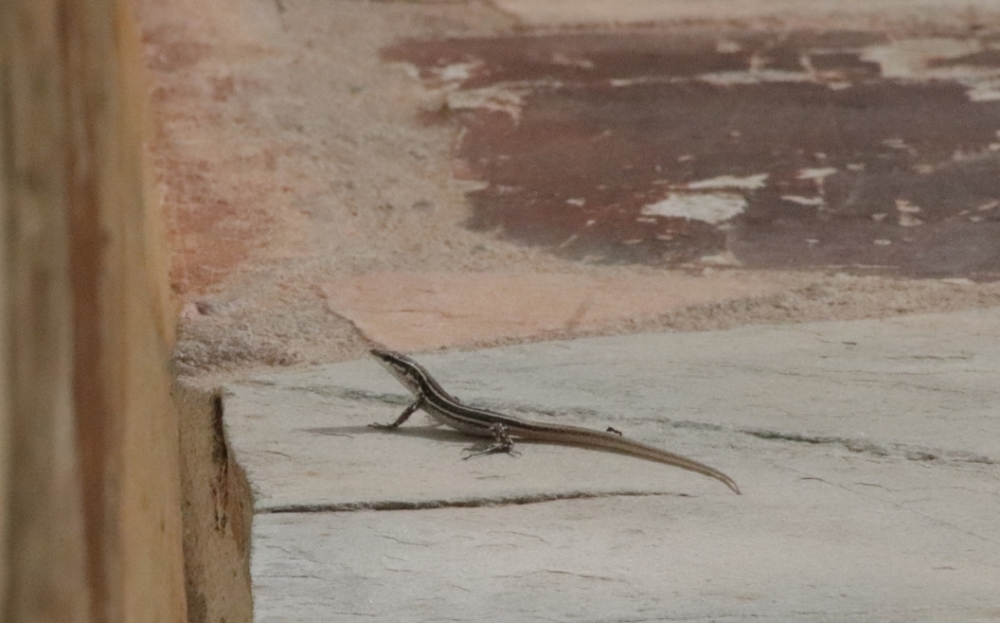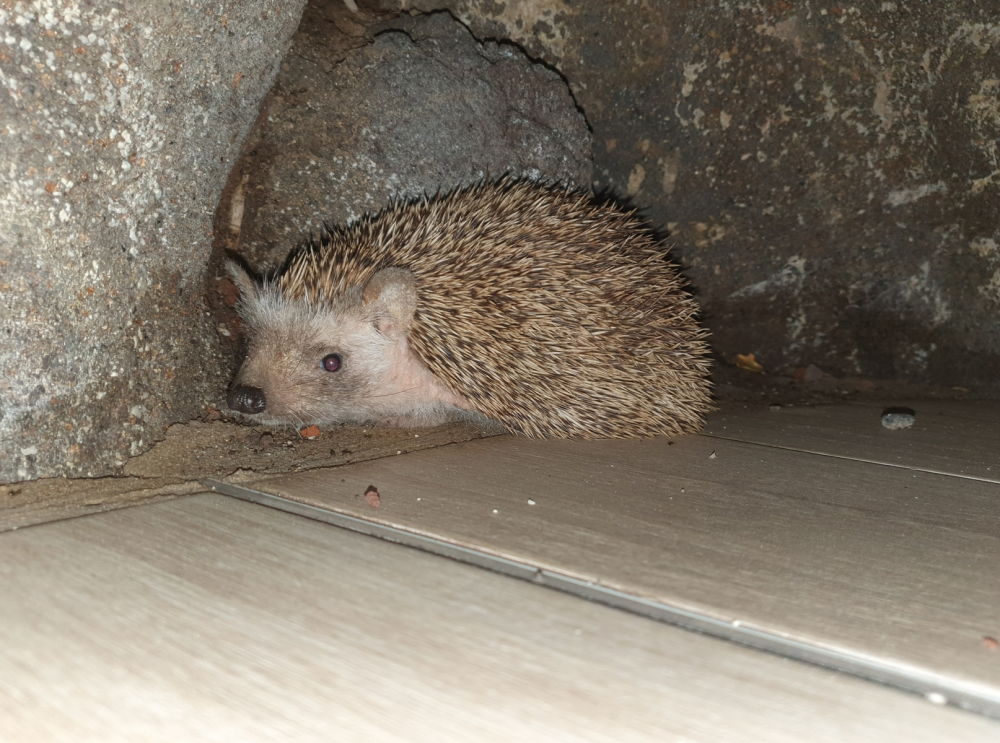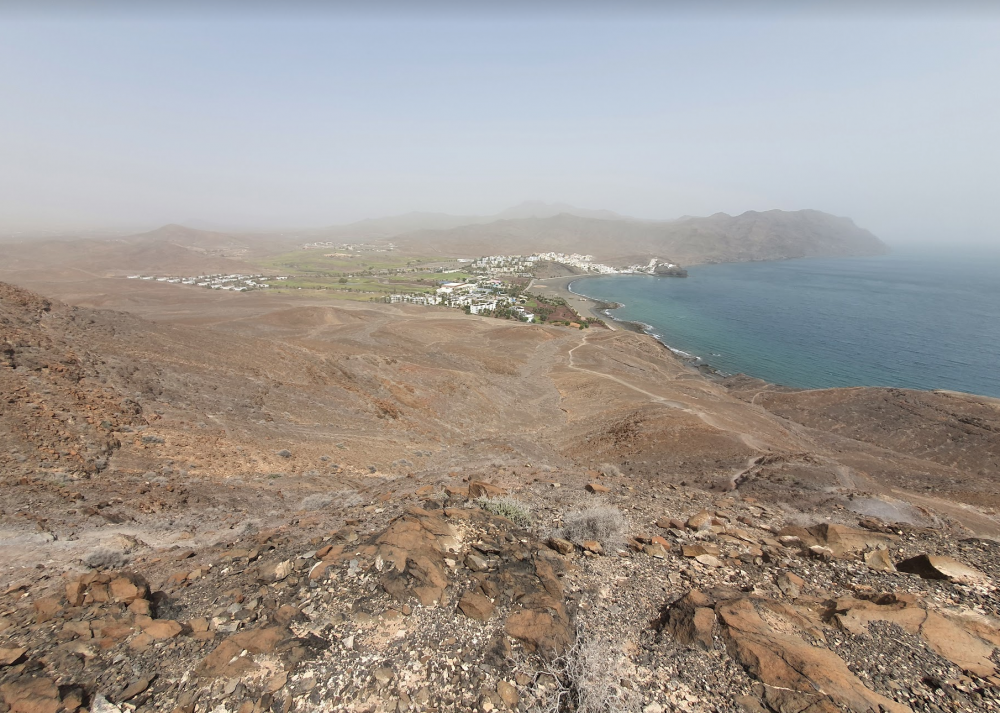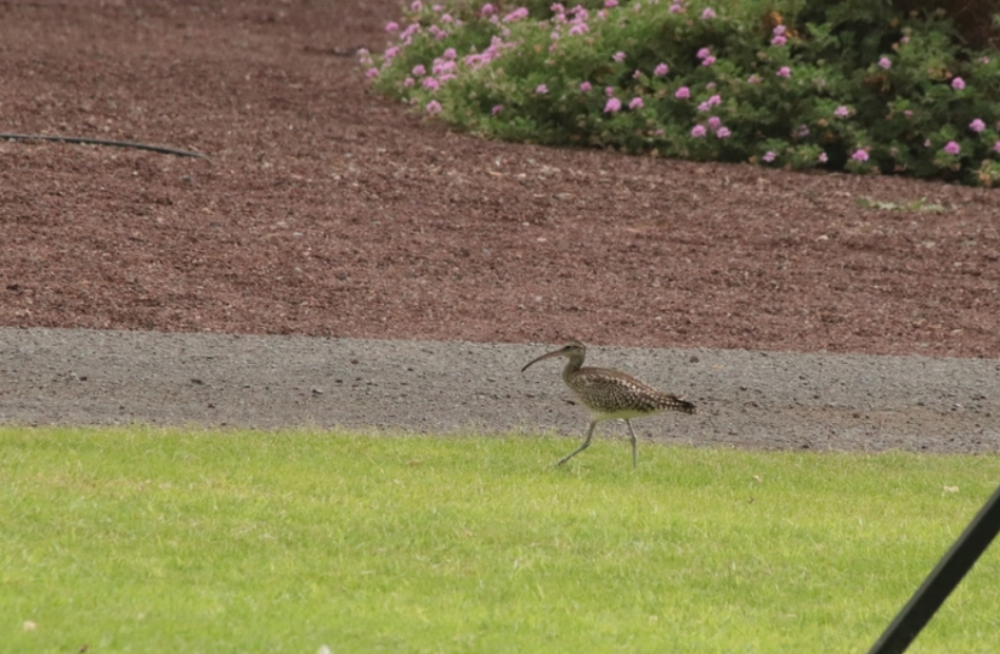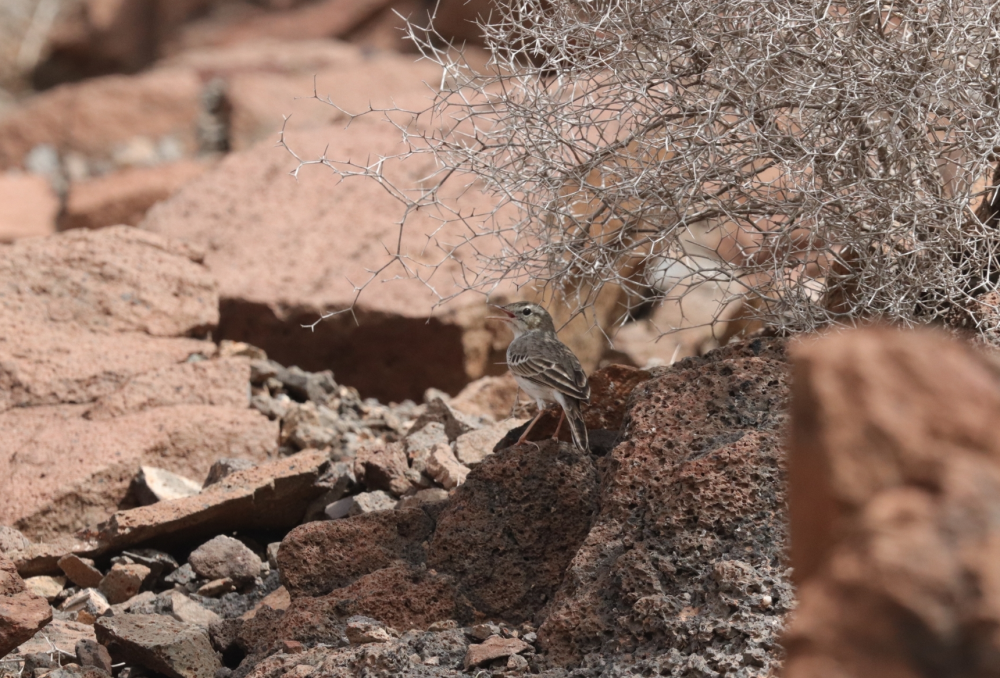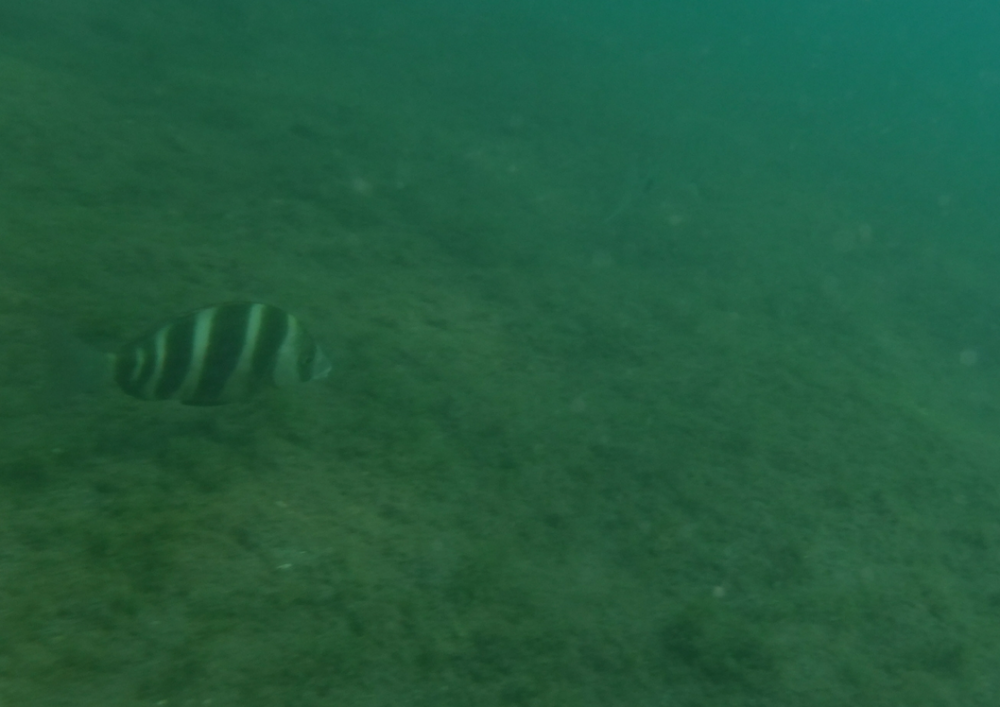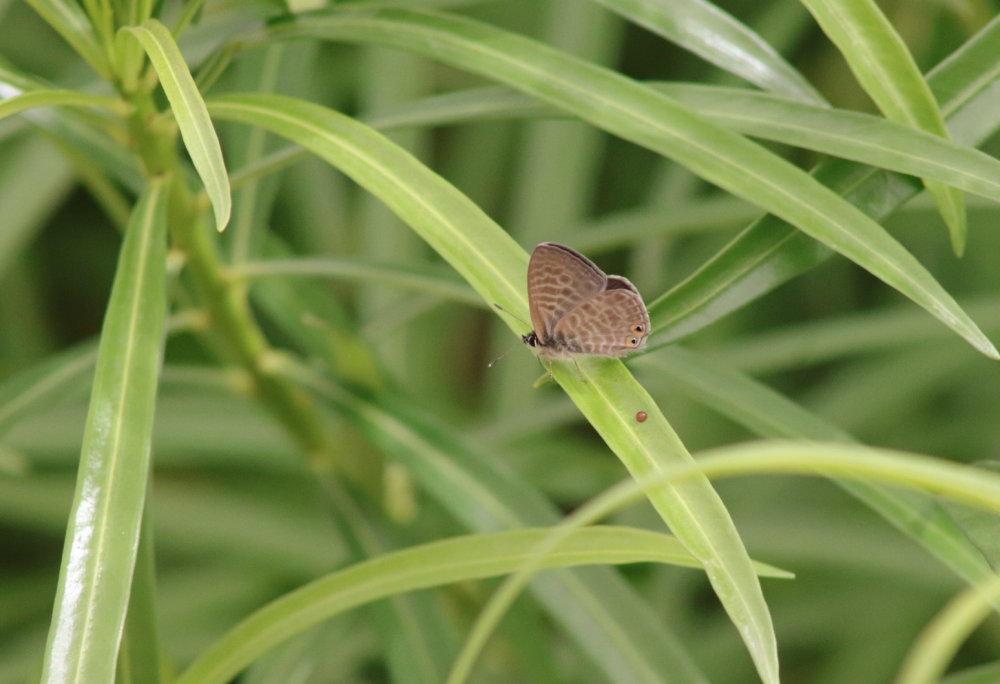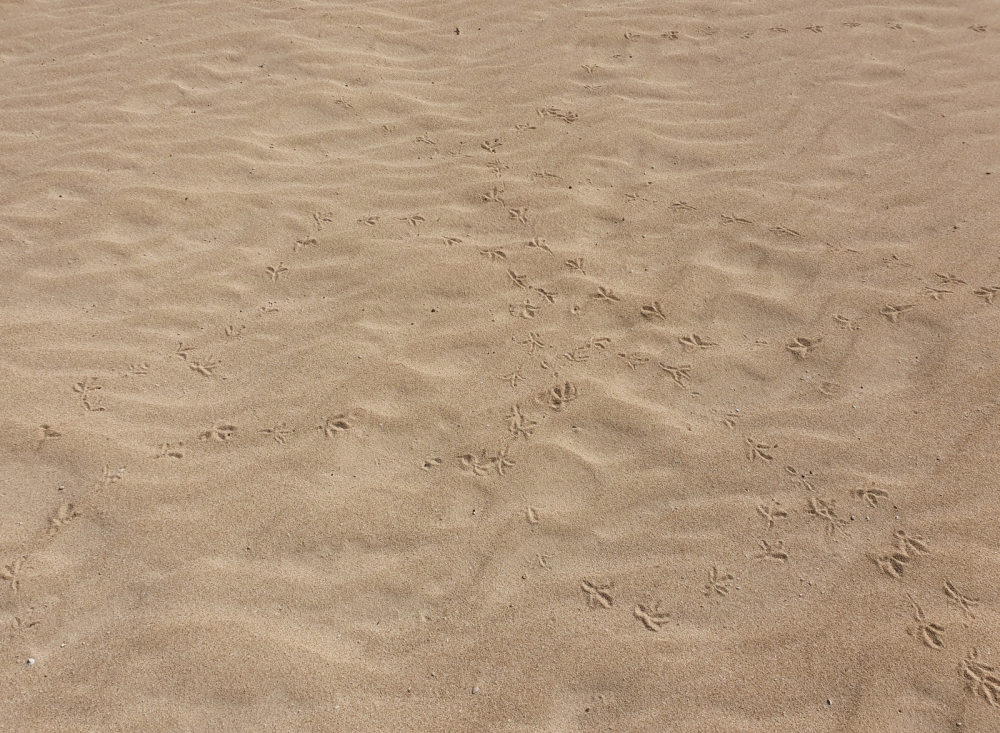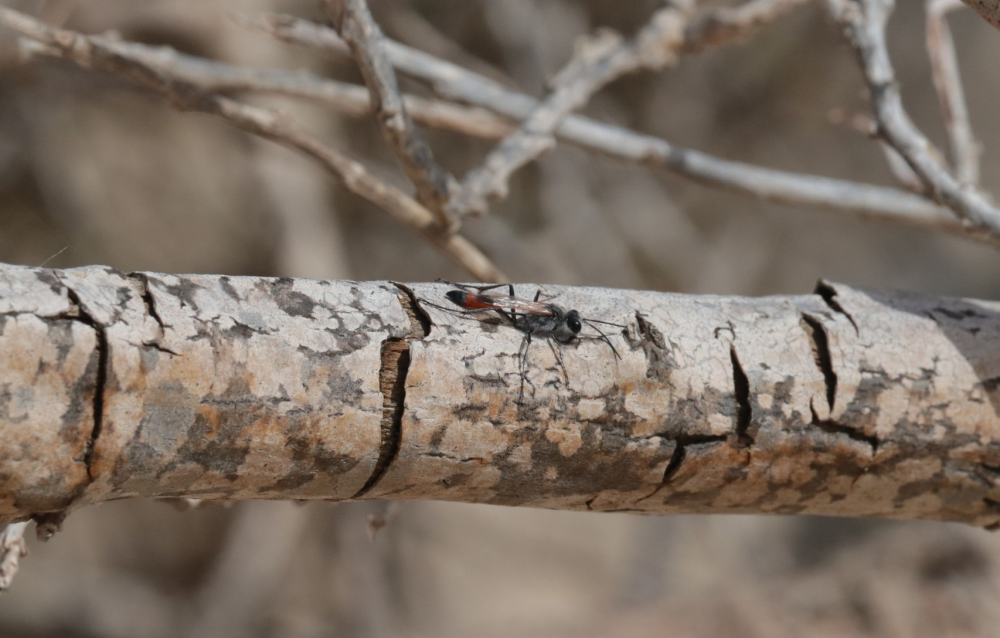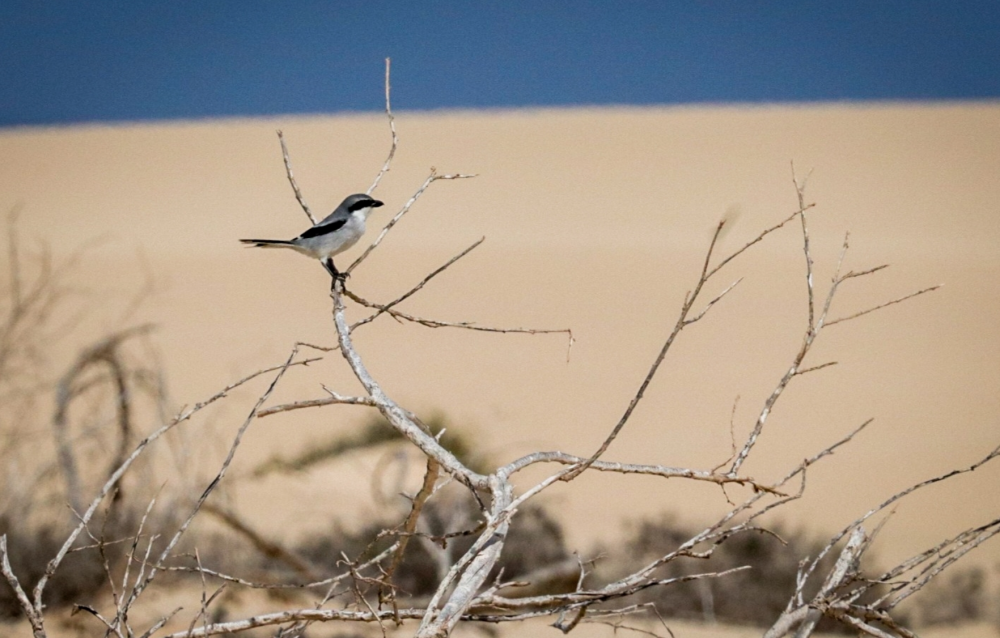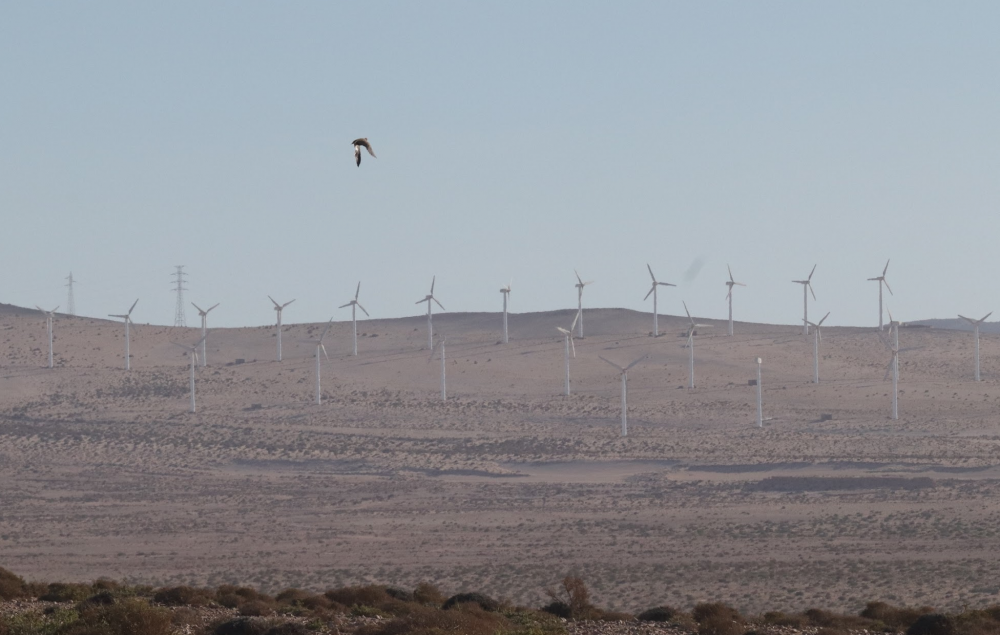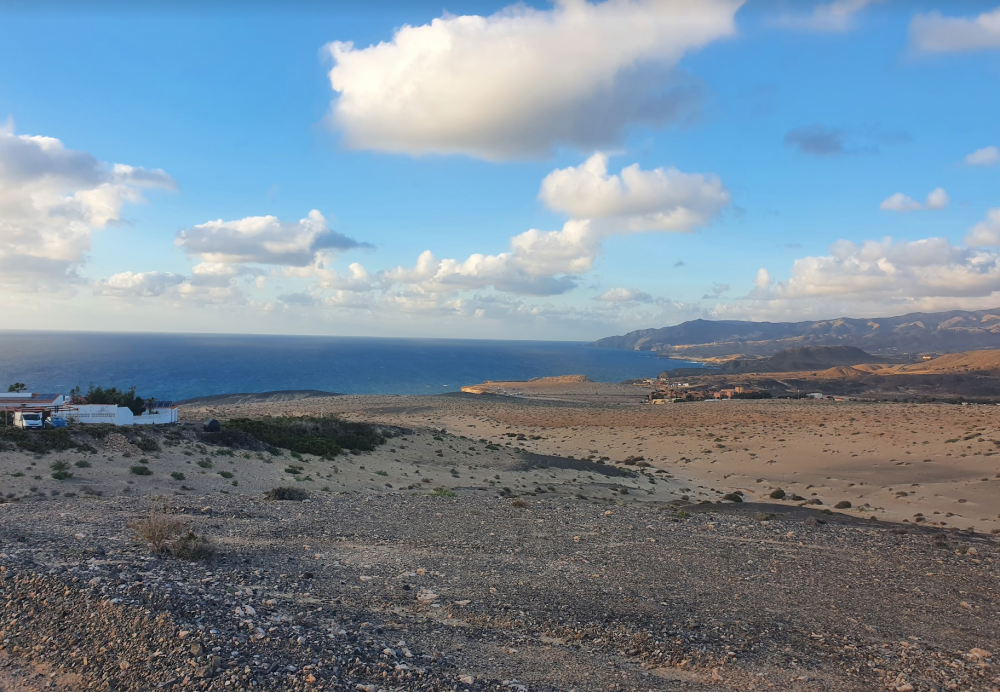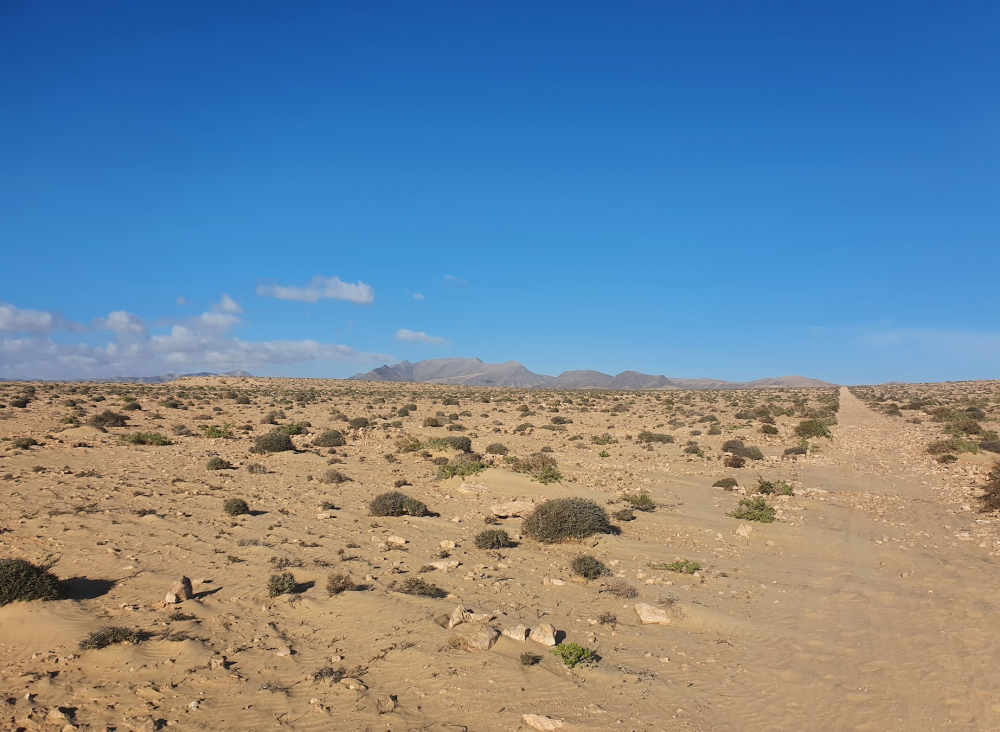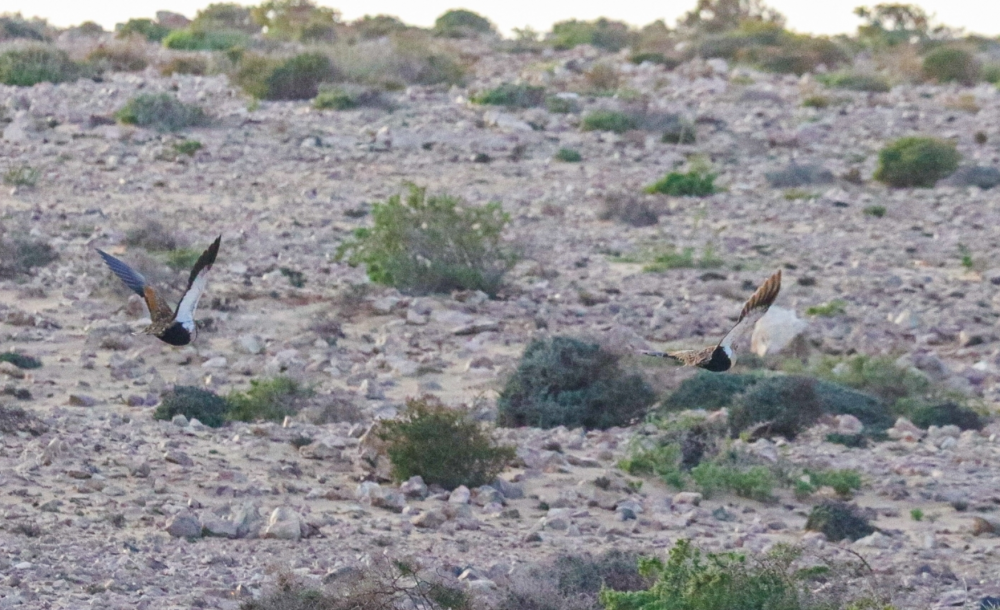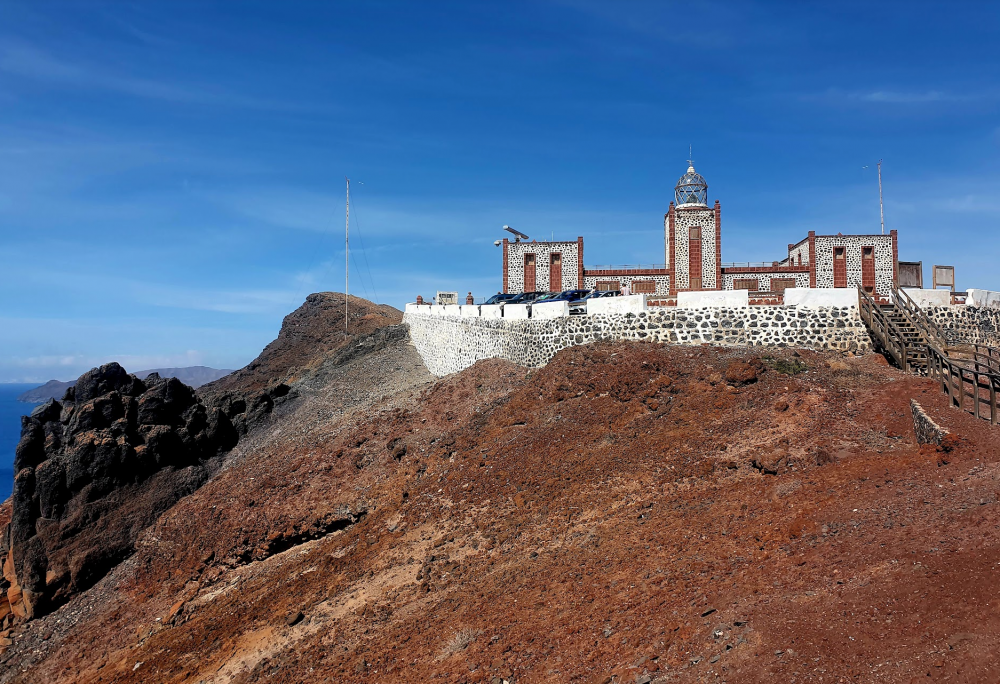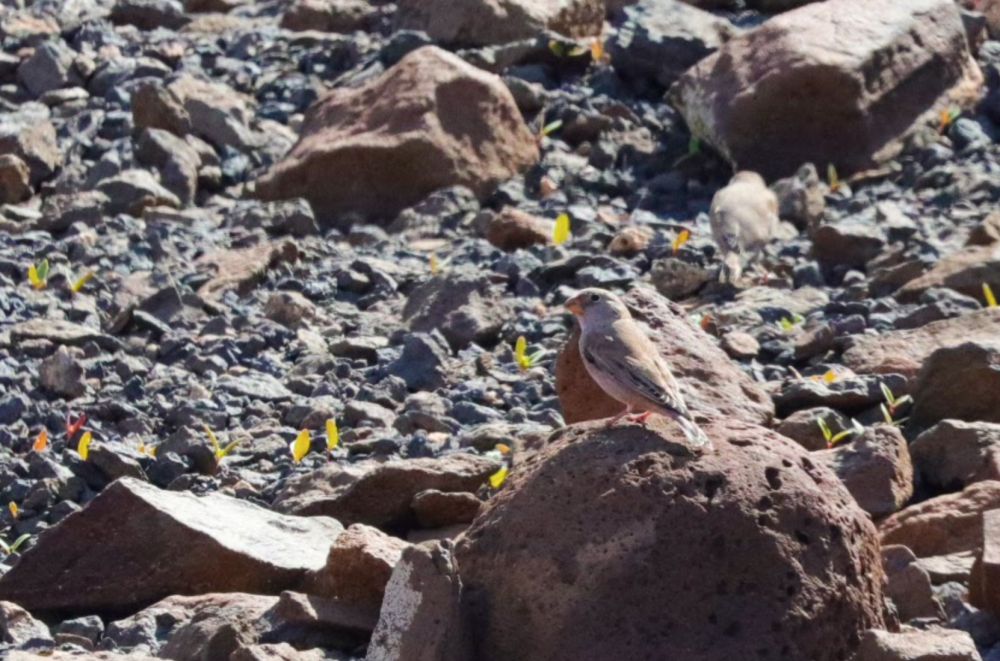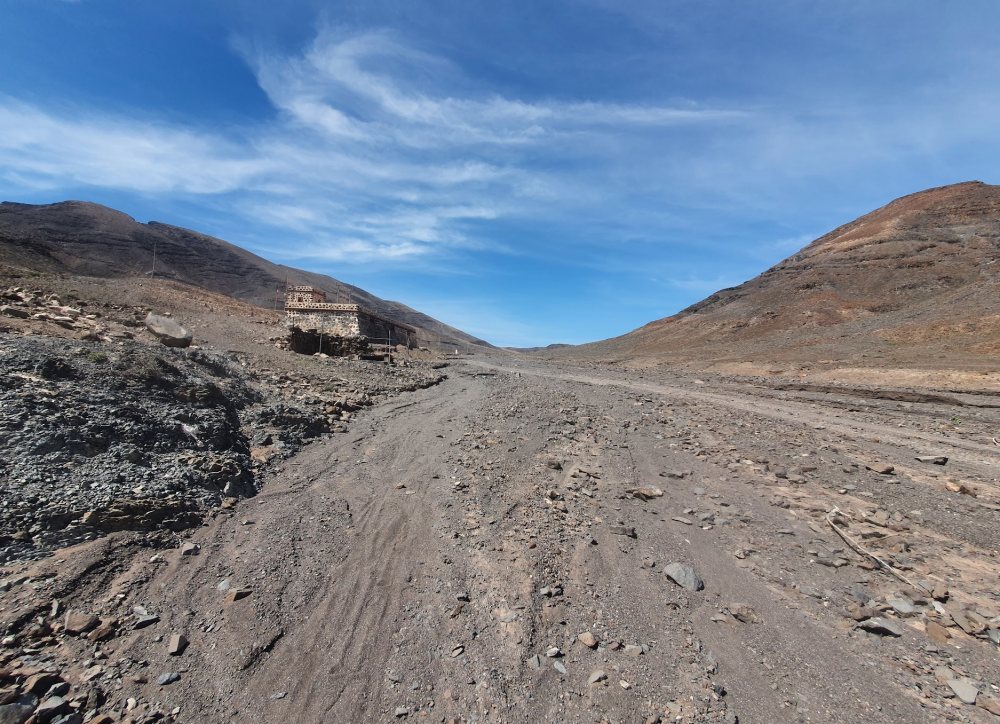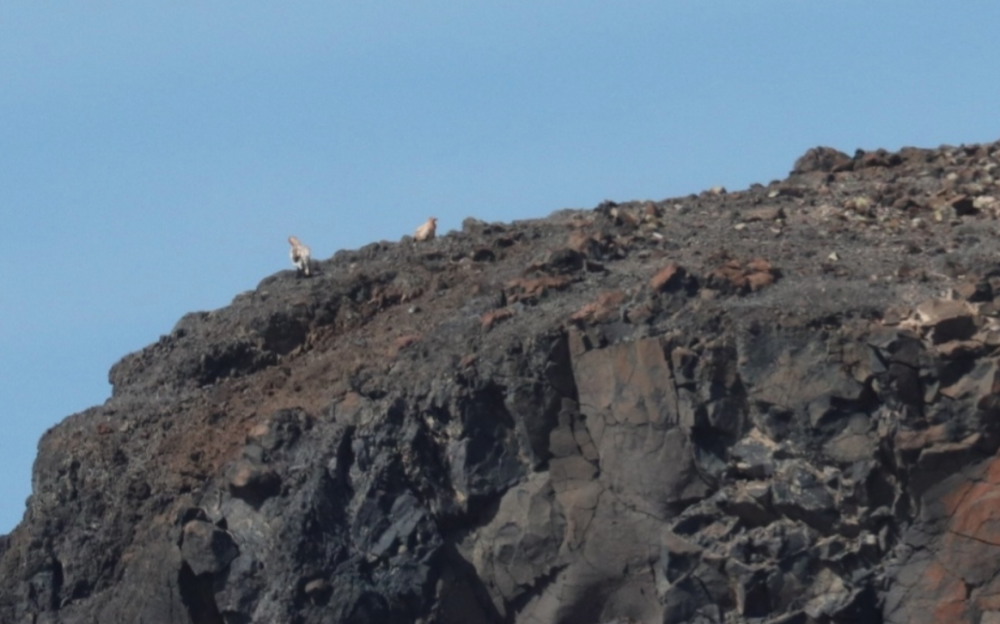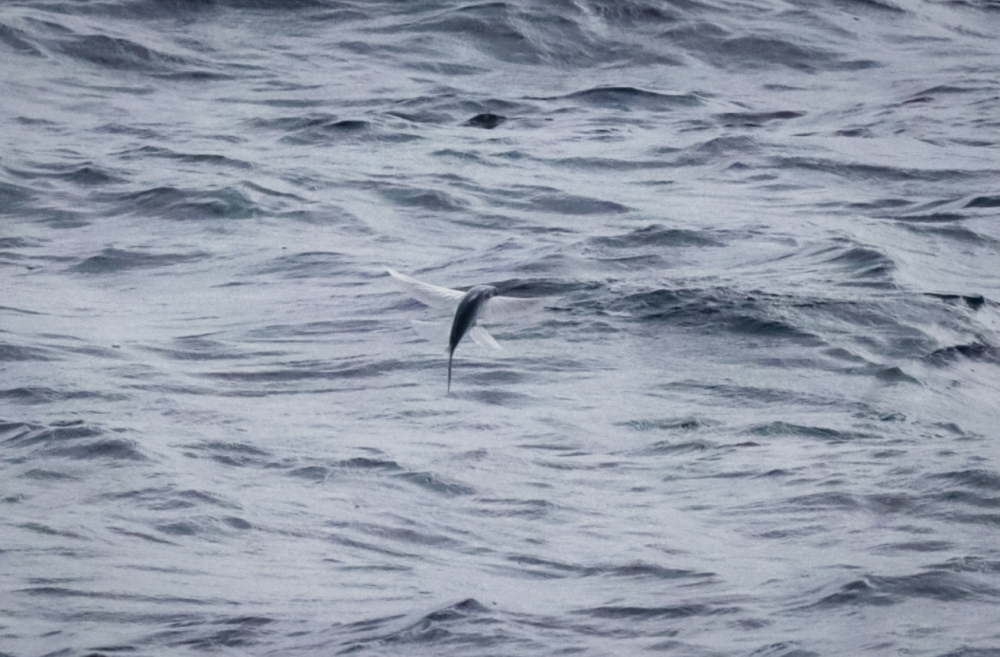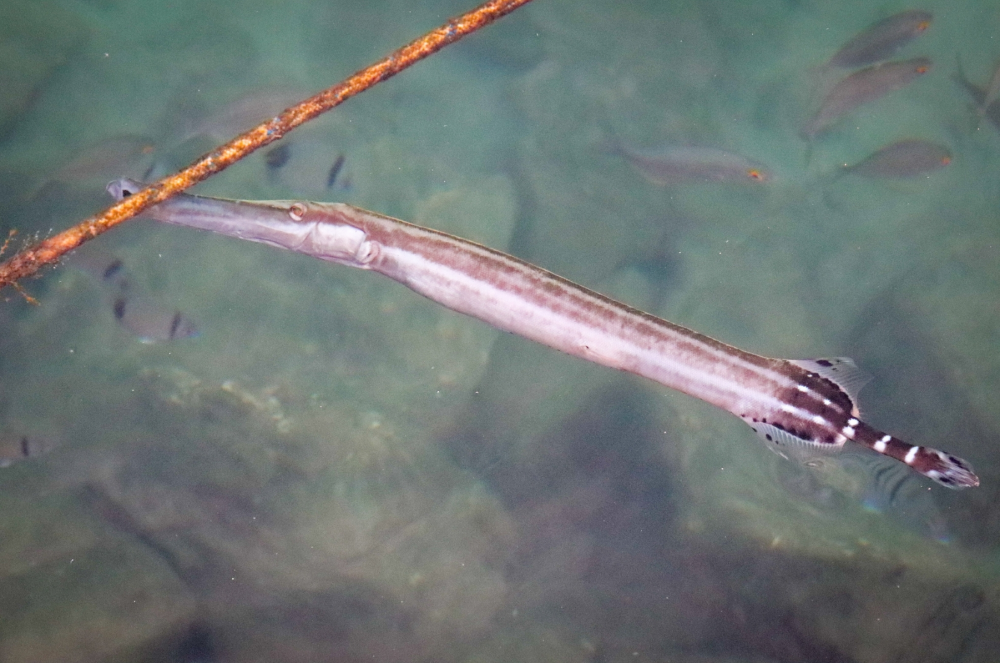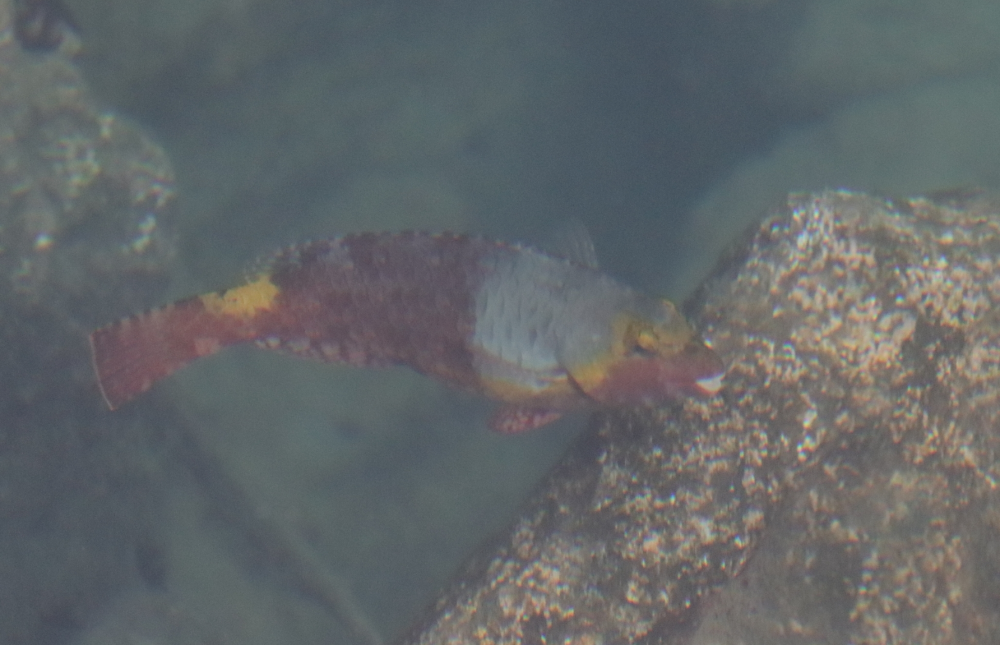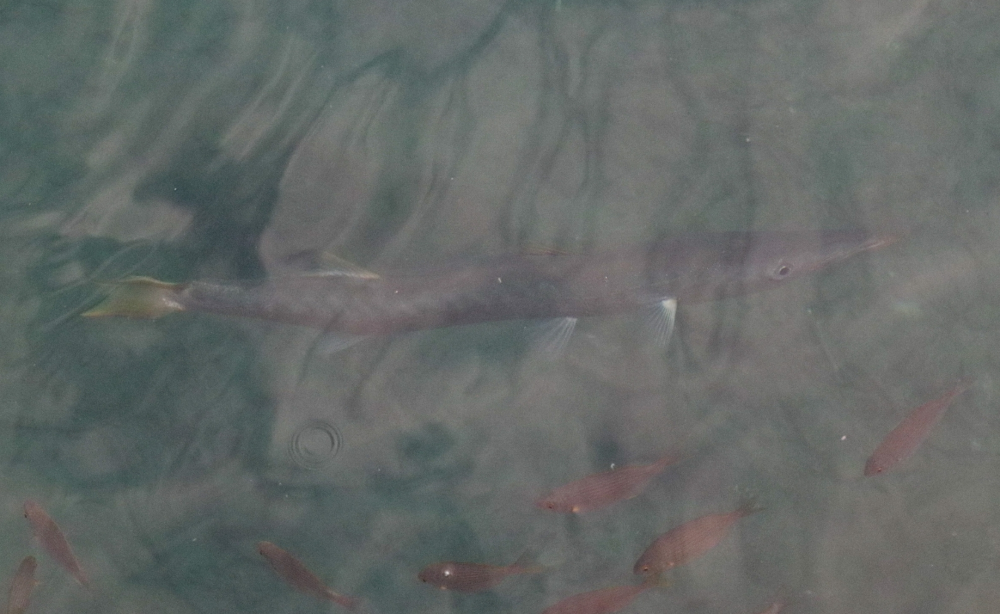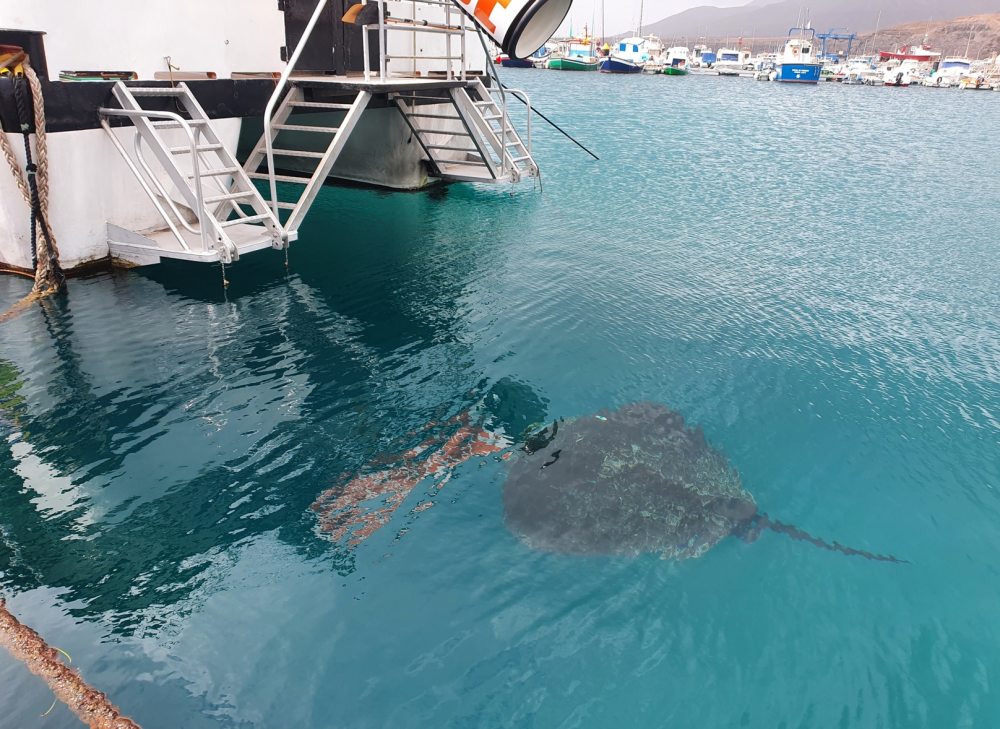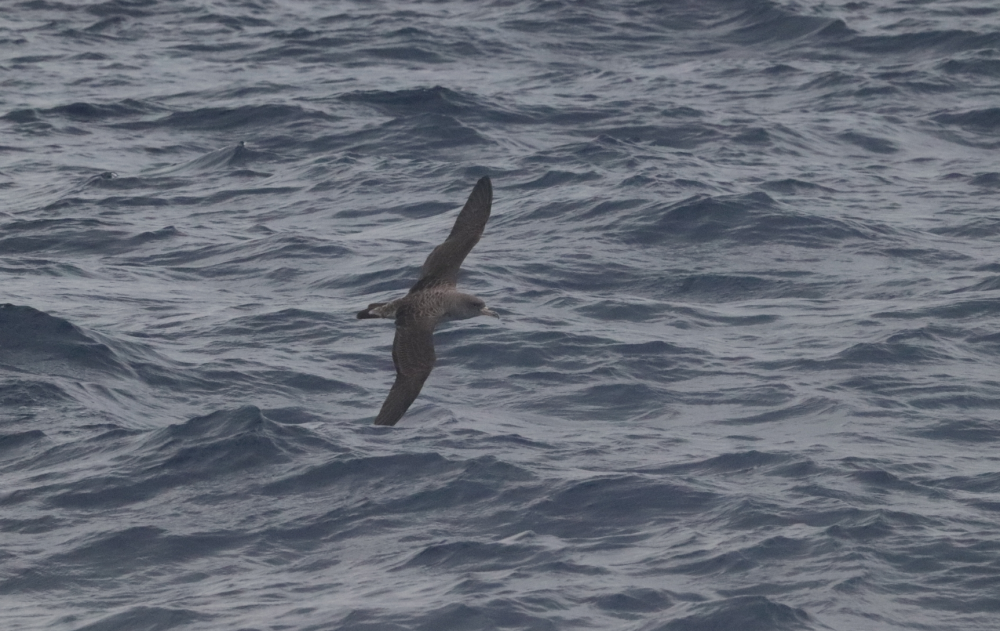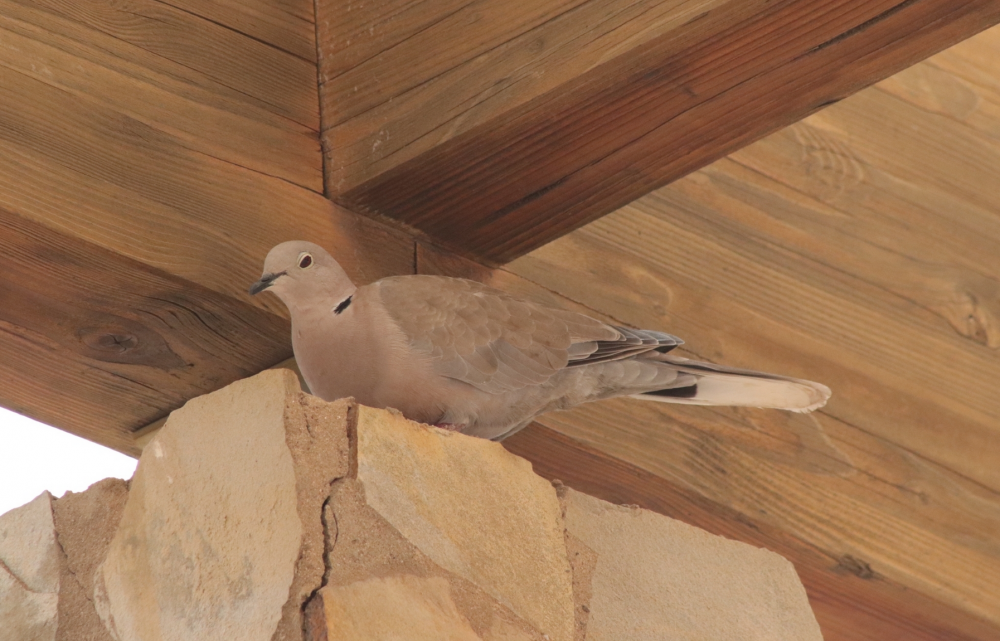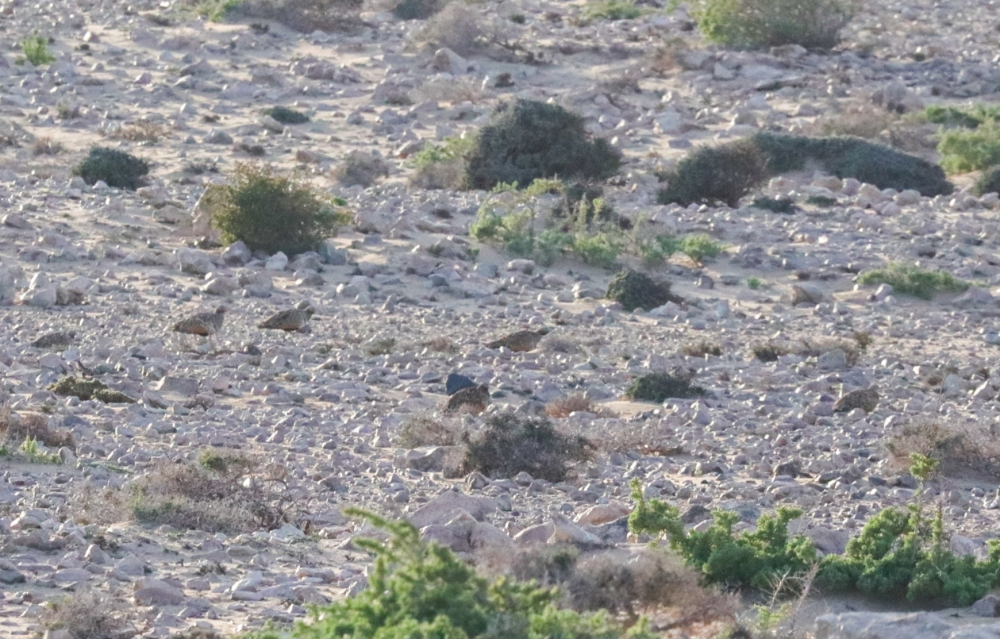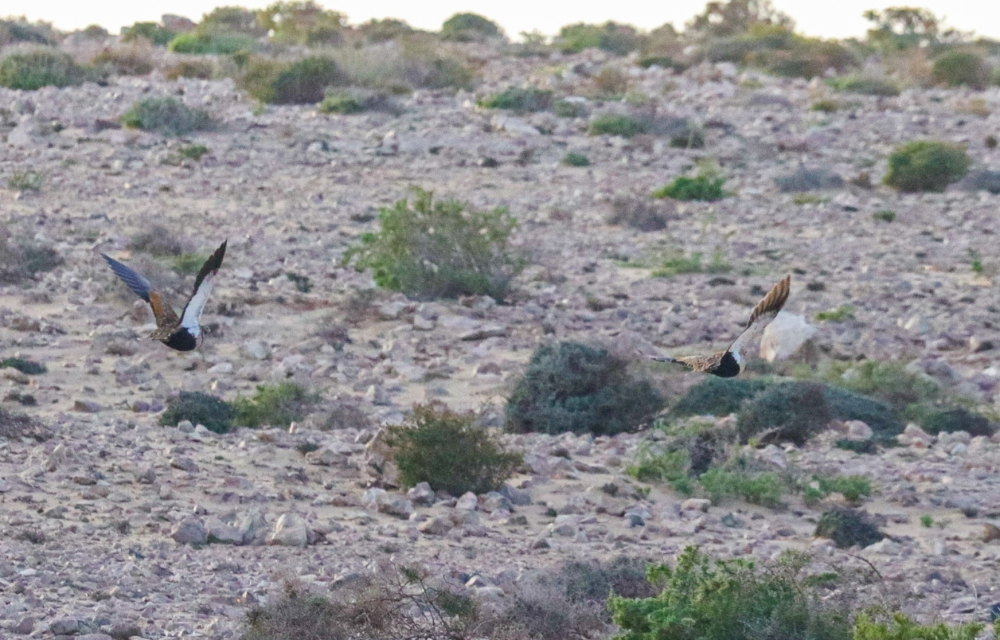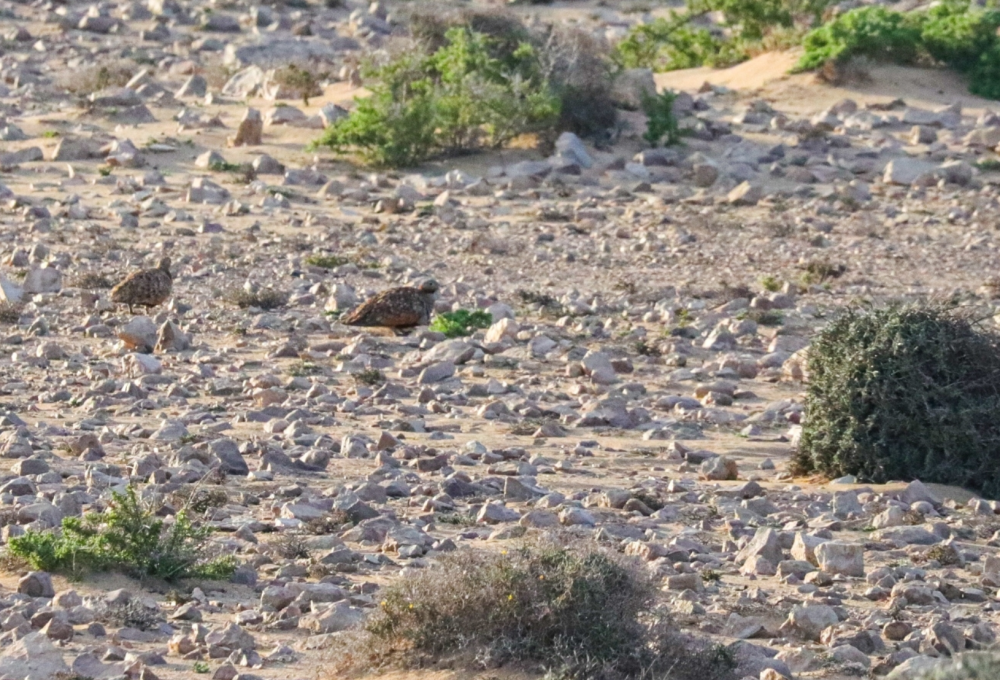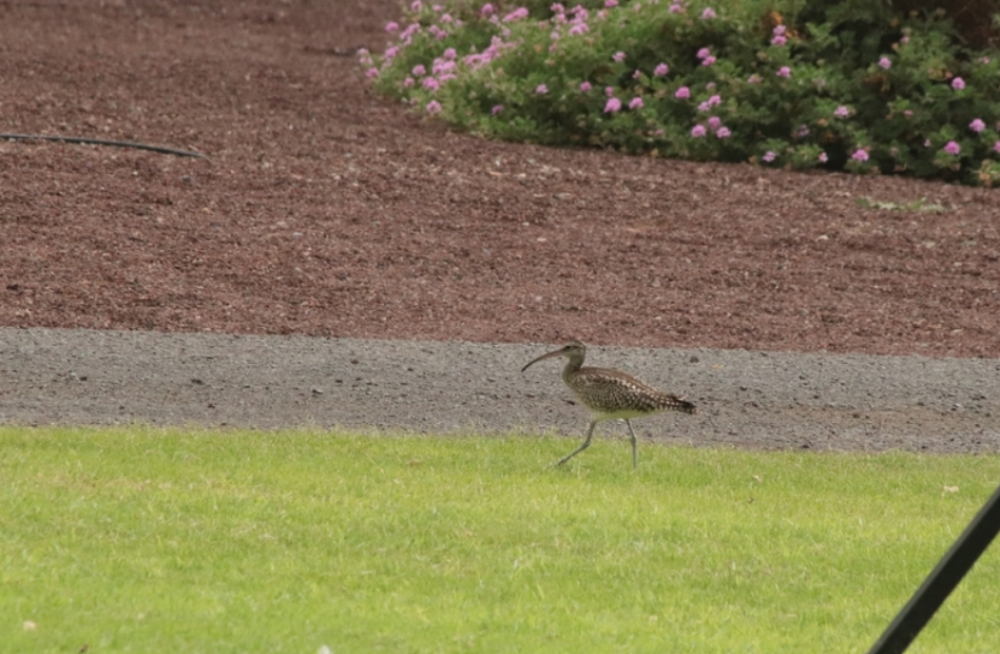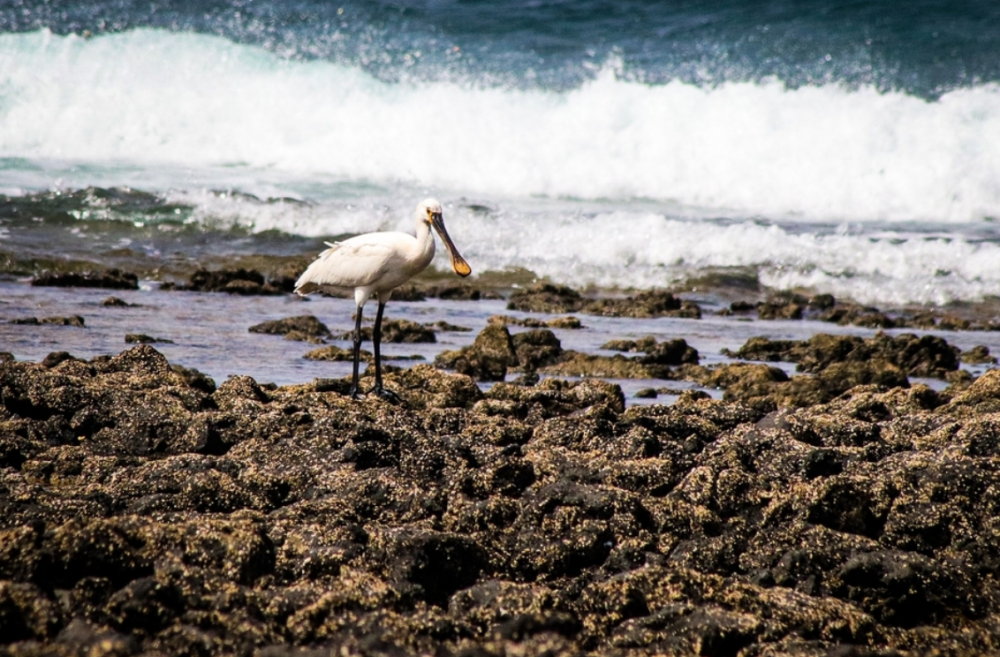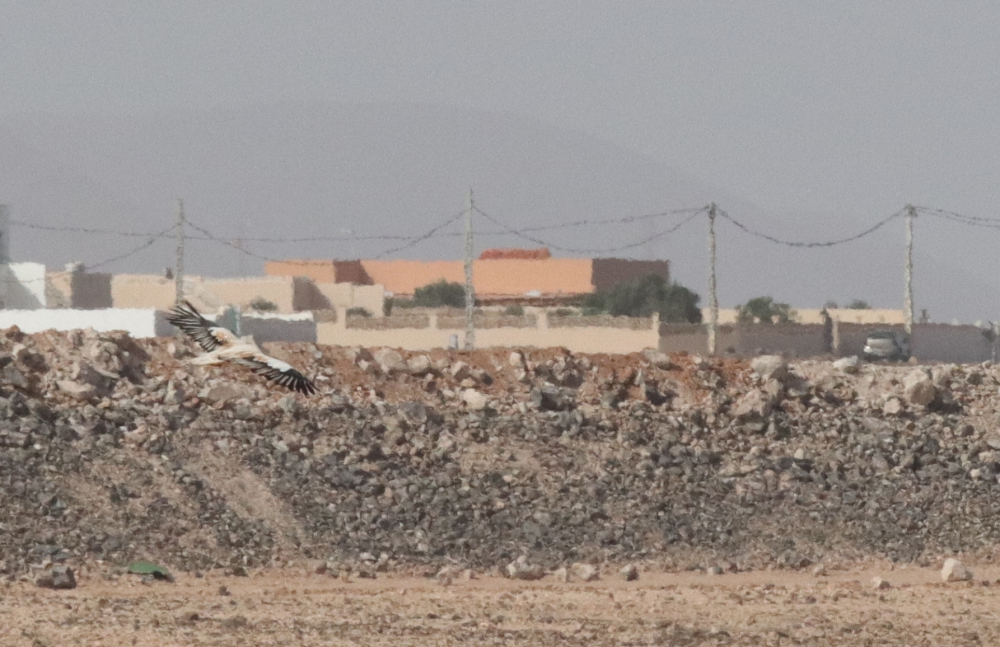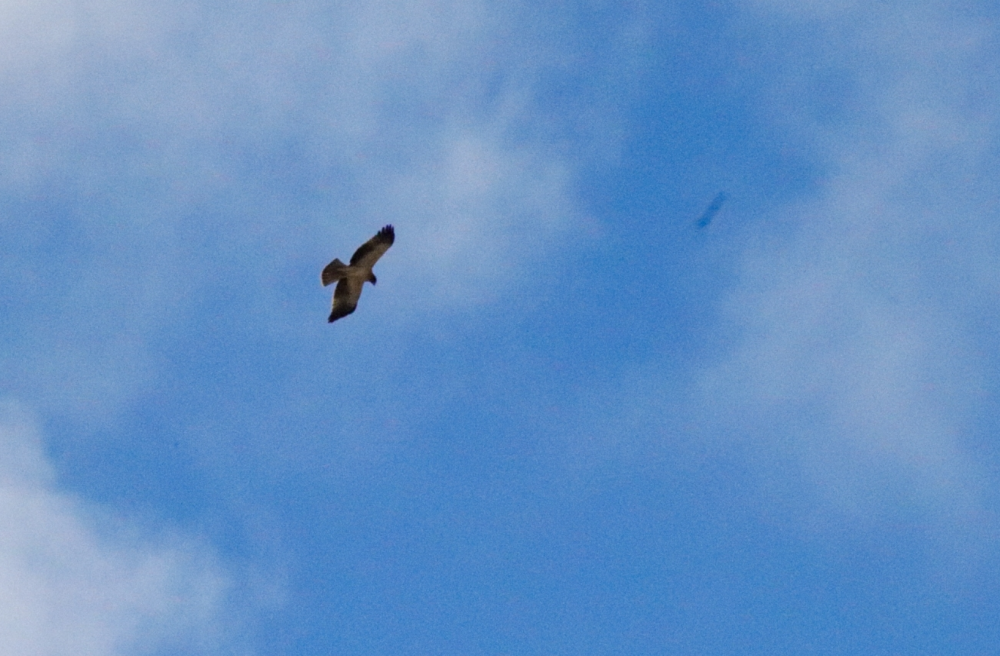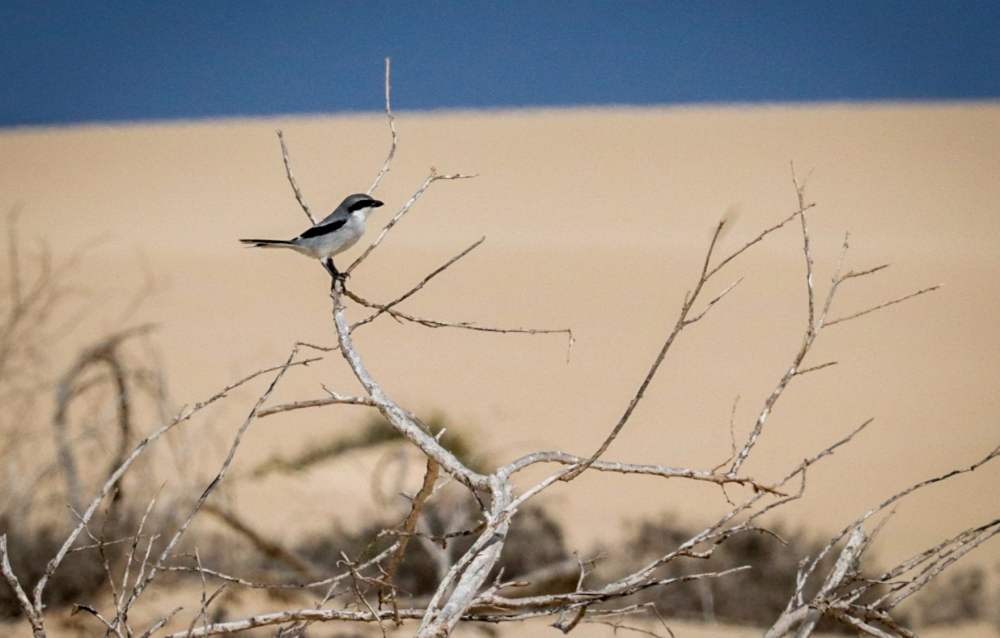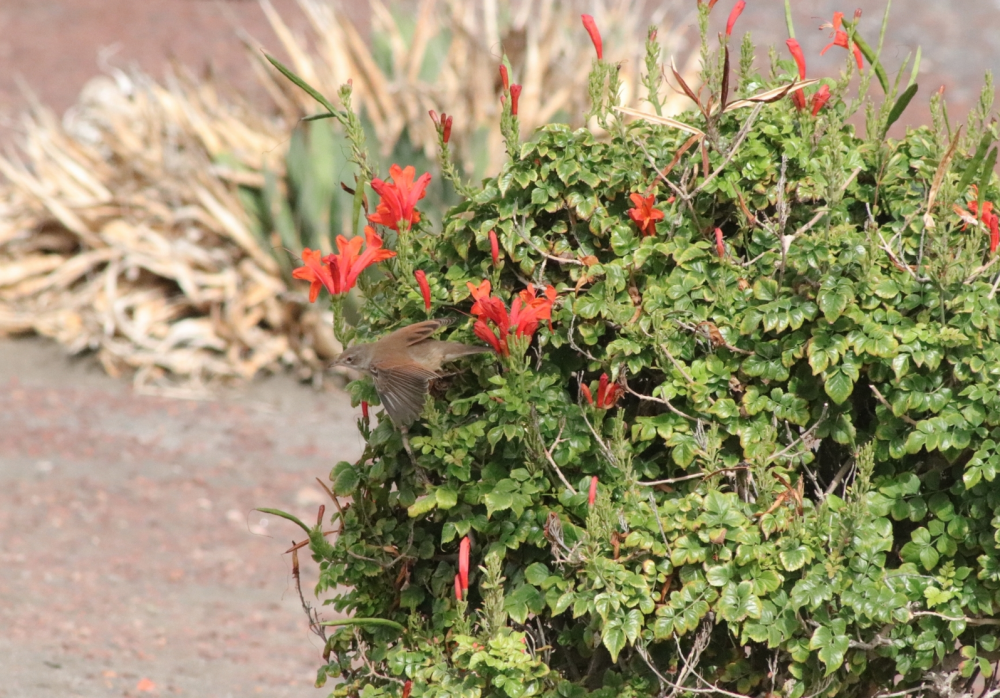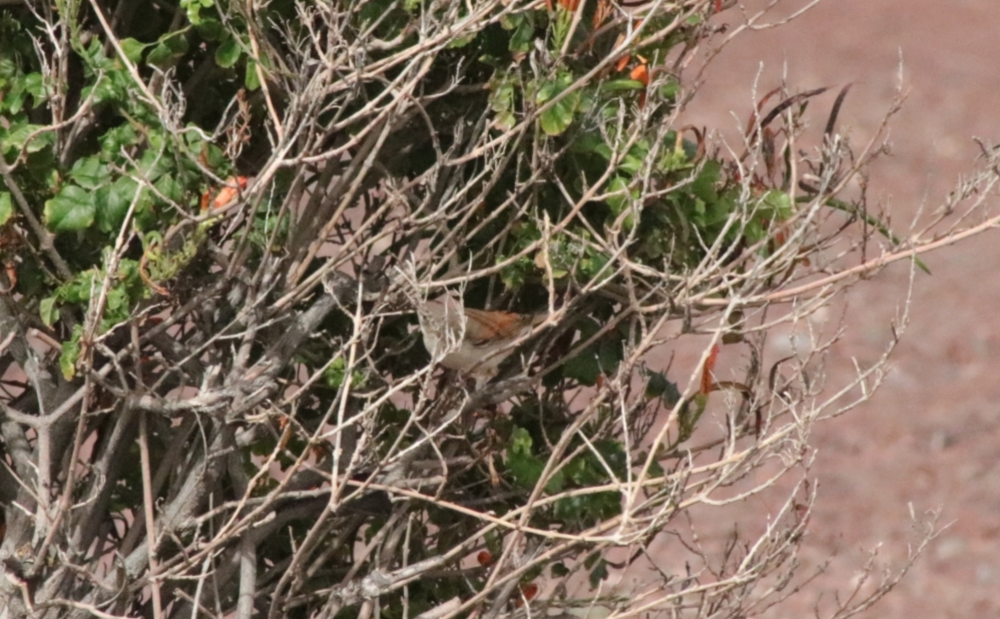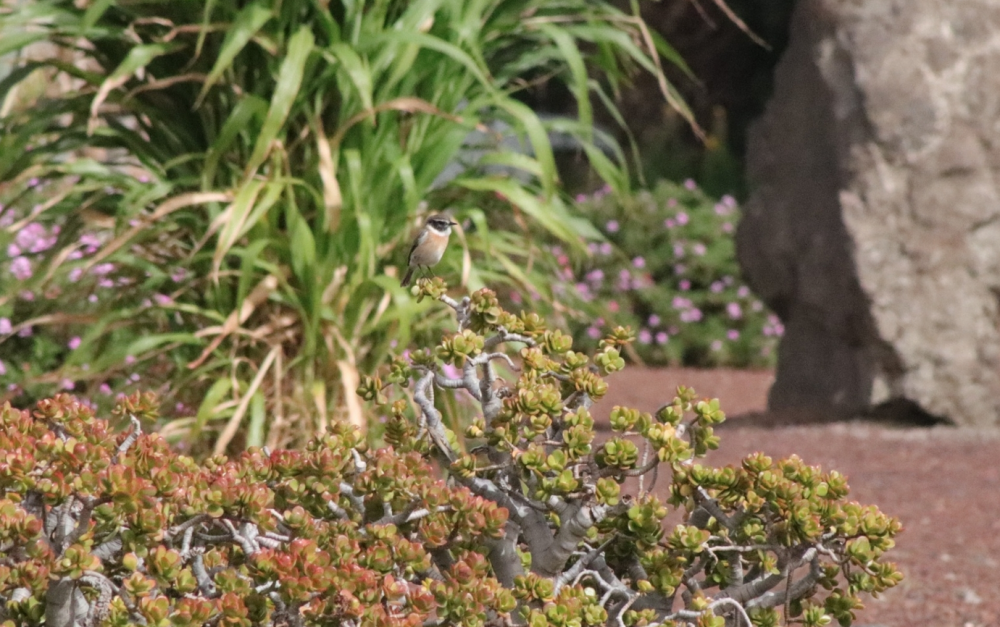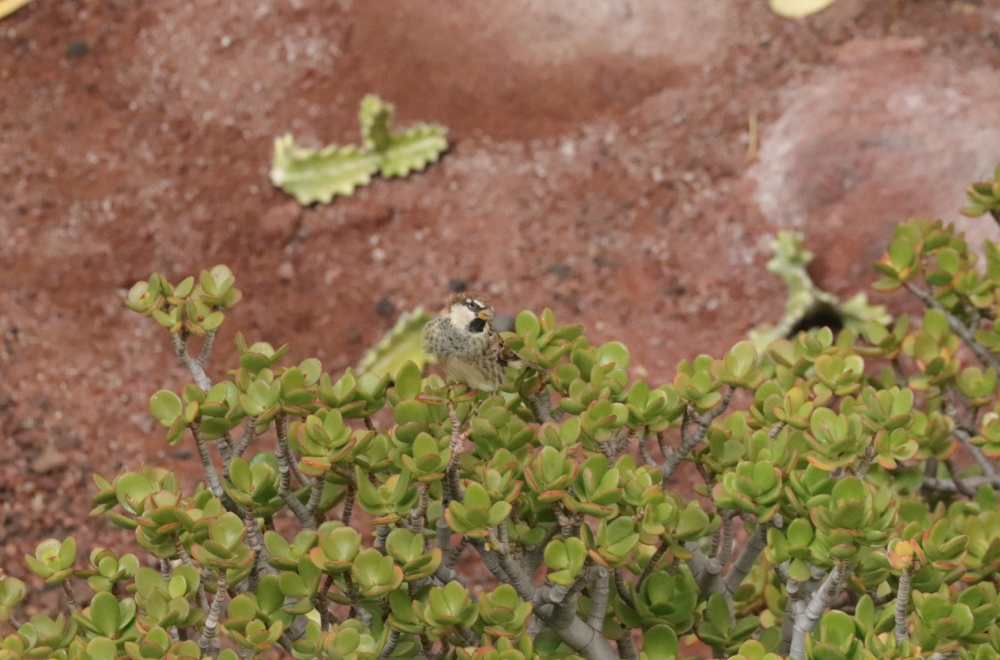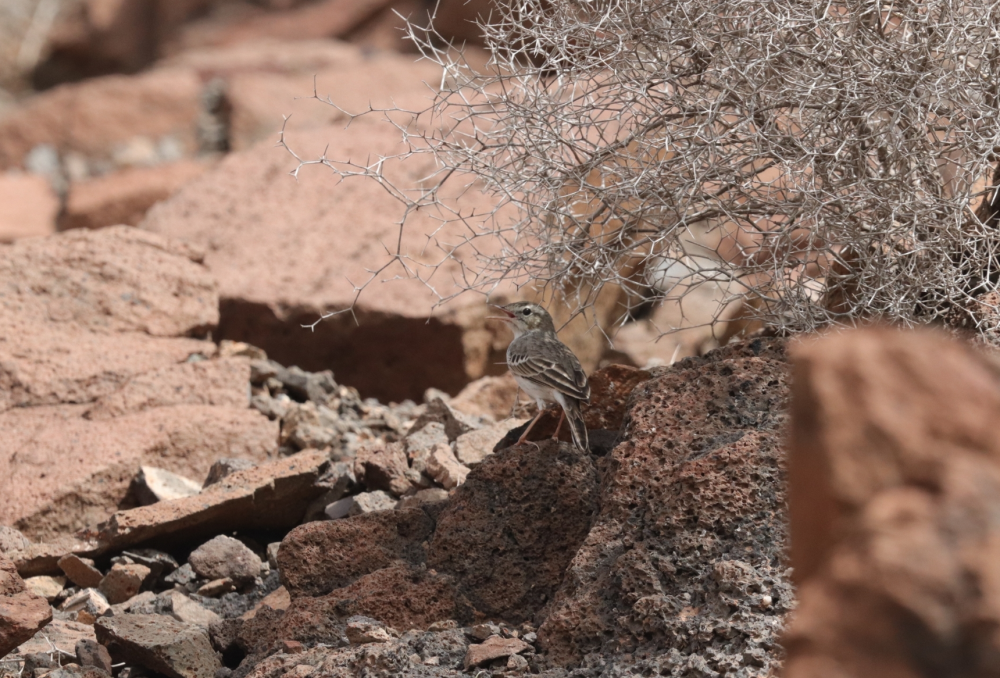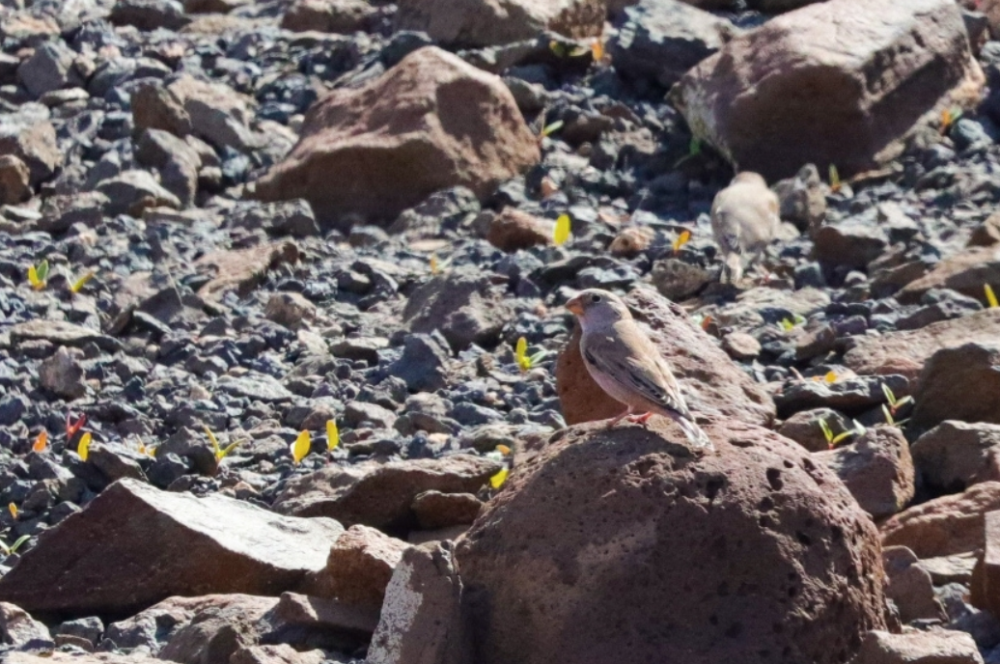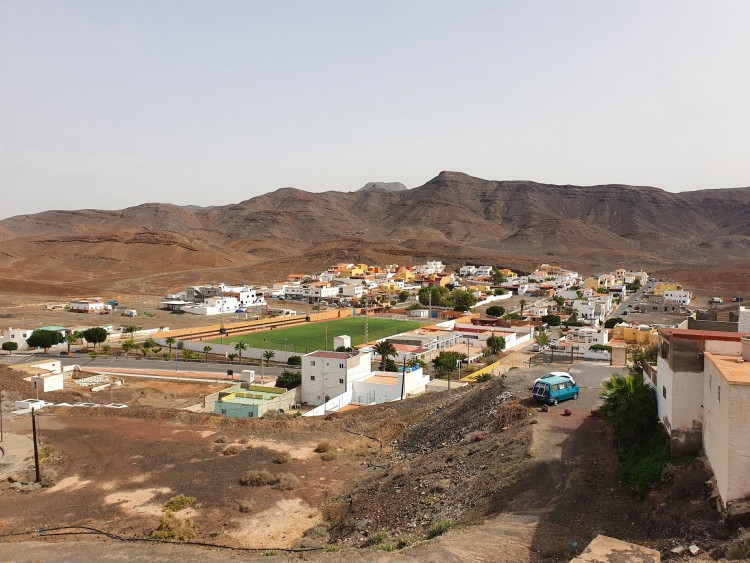
Fuerteventura
01 October 2022 – 13 October 2022
First thing to say, this was a familly holiday and not birding was not the first activity. We were located at the Playitas Resort at the eastern coast. This resort with its central location is very recommendable! They value the sustainability with local food and a well developed recycling system. The hotel complex and the golfcourt are perfect birdingsites.
The island offers planty activitis and has many natural and cultural attractions.
Some higlights from our holidays were the vulcan Calderón Hondo, the "popcorn-bay" Playa El Mejillón and the desert Corralejo in the north. We made on a dolphin tour in Morro Jable, went surffing at La Pared and much more. I could connect every trip with birdwachting. If you want to see lagre numbers of birds, you are wrong on this island. One never see many bird at one point, sometimes I only saw three or four species a day, especially in the desert. But the birds you find are even more special.
The high density of Egyptian Vultures or high quantity endemic species make Fuerteventura to a unique birdingparadise.
Visited Sites
General Travelling Information
A rental car is recommendable and for many places the only possibility. The streets are in good condition and you can reach almost every place by car. The FV-2 is the main road which alows you to drive from the very southern Morro Jable up to the northernmost city Corralejo in less than two hours.
Las Playitas
The best birding spot is at the hotel complex. It has many greenfields, bushes, palms and gravelled pitches. In the night, there are North African Hedgehog serching for food near the restaurants. The Atlantic Lizard and East Canary Gecko are aslo easy to find at the hotel complex. They are endemic to Fuerteventura and Lanzarote.
The mountains south of the hotel are recommendable for hiking. The invasive Barbary Ground Squirrel such as Berthelot's pipit are numerous there.
The beach is suitable for snorkling, but the tides are very strong! The water is very murky but snorkling it is nevertheless worthwhile. It has many species which are endemic to the canaries such as: Macaronesian Toby (Canthigaster capistrata), Madeira Goby (Mauligobius maderensis), Canary Damsel (Similiparma lurida) or Emerald Wrasse (Symphodus trutta). All of these species were very numerous.
More Bird photos at the specieslist!
Target species
-
 African Collared-Dove
Streptopelia roseogrisea
African Collared-Dove
Streptopelia roseogrisea
-
 Whimbrel
Numenius phaeopus
Whimbrel
Numenius phaeopus
-
 Spectacled Warbler
Curruca conspicillata
Spectacled Warbler
Curruca conspicillata
-
 Fuerteventura Stonechat
Saxicola dacotiae
Fuerteventura Stonechat
Saxicola dacotiae
-
 Spanish Sparrow
Passer hispaniolensis
Spanish Sparrow
Passer hispaniolensis
-
 Berthelot's Pipit
Anthus berthelotii
Berthelot's Pipit
Anthus berthelotii
Other wildlife observed
Reptiles:
East Canary Gecko (Tarentola angustimentalis)
Atlantic Lizard (Gallotia atlantica atlantica)
Marmals:
North African Hedgehog
Barbary Ground Squirrel
Fish:
Emerald Wrasse (Symphodus trutta)
Canary Damsel (Similiparma lurida)
Macaronesian Toby (Canthigaster capistrata)
Madeira Goby (Mauligobius maderensis)
European Parrotfish (Sparisoma cretense)
African White Bream (Diplodus cadenati)
Butterfly-winged Comber (Serranus papilionaceus)
Pompano (Trachinotus ovatus)
Red Stripped Mullet (Mullus surmuletus)
Zebra Bream (Diplodus cervinus)
Butterflys:
Lang's Short-tailed Blue (Leptotes pirithous)
Plain Tiger Butterfly (Danaus chrysippus)
Monarch (Danaus plexippus)
Parque Natural de Corralejo
We just stopped at 28°41'56.5"N 13°50'27.7"W for about an hour. The countryside is amazing, it's the second largest sand desert on Fuereventura. I was facinated by the view and walked straight in the desert. I saw many footprints in the sand, which I guess are from Barbary Patrigan. According to eBird, they have the status "naturalized". They were brought on the island by human hands and a large wild population has established over the years.
The higtlight and only seen bird was a Canary Islands Grey Shrike, which should be the only one on the holidays.
The desert isn't flat and you really must remeber the way back in the endlessly dunes!
Target species
-
 Great Gray Shrike
Lanius excubitor
Great Gray Shrike
Lanius excubitor
Other wildlife observed
Tyde's Sand Wasp (Podalonia tydei)
La Pared
I first was in La Part for surfing but I returned another day for birdwatching. One can park on Playa del Viejo Reyes. North of La Pared is a smal river which flows into the sea at 28°13'02.7"N 14°13'16.5"W. The river might be dried out but the vegetation in the riverbed is birdhotspot. I saw there the only Fuerteventura Stonechat outside the hotel complex.
But the main reason why I came again was the desert. I walked up to a group of houses called Pueblo del Mar. And from there I walked straight into the dersert. There are many paths which leed you criss-cross through the desert. I don't recommend to plan a exact route one should rather decide in the field were to walk.
It's very important to search the surroundings precisely with the binocular or if available with the scope. The bird won't show up by them self.
I didn't cover as much distance as I expected because I checked every dune. But I was successful and found several Black-bellied Sandgrouses and also some Trumpeter Finches.
It's a very special feeling to be in a desert, which borders the ocean!
Target species
-
 Black-bellied Sandgrouse
Pterocles orientalis
Black-bellied Sandgrouse
Pterocles orientalis
-
 Trumpeter Finch
Bucanetes githagineus
Trumpeter Finch
Bucanetes githagineus
Leuchtturm Entallada
The Lighthouse is located at the point nearest to Africa and the view is incredible! With a scope it might be a good place for seawatching. At the lighthouse is a board with the profile of Egyptian Vultures and no minute later, I discovert two ind. sitting on top of a mountain.
While driving back, we found a road junction at 28°14'08.6"N 13°57'37.9"W which leads to a dried out riverbed (Barranco del Roque) we followed the riverbed by foot and ended up at a beautiful beach. In the vally, I found a group of about five Trumpeter Finches.
Target species
-
 Egyptian Vulture
Neophron percnopterus
Egyptian Vulture
Neophron percnopterus
-
 Trumpeter Finch
Bucanetes githagineus
Trumpeter Finch
Bucanetes githagineus
Morro Jable
I didn't see much of Morro Jable itself, only the harbour. I never saw so much fish as in this basin including a gigant Stingray, Eastern Atlantic Trumpetfish and Yellowmouth Barracuda (28°02'56.6"N 14°21'33.0"W). We booked a delphine tour on a catamaran. I recommend this to anyone who doesn't get seasick. There were hundreds of Cory's Shearwaters hunting not far from the port. They got very near to the boat. After long waiting, we found a group of Bottlenose Dolphins. Whil that was the higlight of the whole boat, I was more fascinated by the flying fish. They were massiv and flew several meters in the air. The photos were not enough good to indentify them but they probably belong to the genus Cheilopogon.
Target species
-
 Cory's Shearwater
Calonectris diomedea
Cory's Shearwater
Calonectris diomedea
Other wildlife observed
Bottlenose Dolphins
Round Fantail Ray (Taeniurops grabatus)
Yellowmouth Barracuda (Sphyraena viridensis)
Eastern Atlantic Trumpetfish (Aulostomus strigosus)
European Parrotfish (Sparisoma cretense)
East Atlantic Redlip Blenny (Ophioblennius atlanticus)
Thick-lipped mullet (Chelon labrosus)
Species List
-
 Rock Pigeon (Feral Pigeon)
Columba livia (Feral Pigeon)
details
sounds
Rock Pigeon (Feral Pigeon)
Columba livia (Feral Pigeon)
details
sounds
-
Las Playitas
-
-
 Eurasian Collared-Dove
Streptopelia decaocto
details
sounds
Eurasian Collared-Dove
Streptopelia decaocto
details
sounds
-
Las Playitas
-
-
 African Collared-Dove
Streptopelia roseogrisea
details
sounds
African Collared-Dove
Streptopelia roseogrisea
details
sounds
-
 Black-bellied Sandgrouse
Pterocles orientalis
details
sounds
Black-bellied Sandgrouse
Pterocles orientalis
details
sounds
-
 Common Ringed Plover
Charadrius hiaticula
details
sounds
Common Ringed Plover
Charadrius hiaticula
details
sounds
-
enroute
-
-
 Little Ringed Plover
Charadrius dubius
details
sounds
Little Ringed Plover
Charadrius dubius
details
sounds
-
Las Playitas
-
-
 Whimbrel
Numenius phaeopus
details
sounds
Whimbrel
Numenius phaeopus
details
sounds
-
 Common Sandpiper
Actitis hypoleucos
details
sounds
Common Sandpiper
Actitis hypoleucos
details
sounds
-
Las Playitas
-
-
 Yellow-legged Gull
Larus michahellis
details
sounds
Yellow-legged Gull
Larus michahellis
details
sounds
-
Las Playitas
-
La Pared
-
Morro Jable
-
-
 Cory's Shearwater
Calonectris diomedea
details
sounds
Cory's Shearwater
Calonectris diomedea
details
sounds
-
Morro Jable
dozens of bird hunting on the open sea
-
-
 Little Egret
Egretta garzetta
details
sounds
Little Egret
Egretta garzetta
details
sounds
-
Las Playitas
-
-
 Western Cattle Egret
Bubulcus ibis
details
sounds
Western Cattle Egret
Bubulcus ibis
details
sounds
-
Morro Jable
-
-
 Gray Heron
Ardea cinerea
details
sounds
Gray Heron
Ardea cinerea
details
sounds
-
Las Playitas
-
Morro Jable
-
-
 Eurasian Spoonbill
Platalea leucorodia
details
sounds
Eurasian Spoonbill
Platalea leucorodia
details
sounds
-
 Egyptian Vulture
Neophron percnopterus
details
sounds
On the hole trip I saw 4 ind. I discovert twice one ind. for the car and two sitting ind. from Faro de la Entallada
Egyptian Vulture
Neophron percnopterus
details
sounds
On the hole trip I saw 4 ind. I discovert twice one ind. for the car and two sitting ind. from Faro de la Entallada-
Leuchtturm Entallada
-
-
 Booted Eagle
Hieraaetus pennatus
details
sounds
Booted Eagle
Hieraaetus pennatus
details
sounds
-
 Eurasian Kestrel
Falco tinnunculus
details
sounds
Eurasian Kestrel
Falco tinnunculus
details
sounds
-
Las Playitas
-
La Pared
-
enroute
-
-
 Great Gray Shrike
Lanius excubitor
details
sounds
Ssp. L.e. koenigi
Great Gray Shrike
Lanius excubitor
details
sounds
Ssp. L.e. koenigi -
 Common Raven
Corvus corax
details
sounds
Common Raven
Corvus corax
details
sounds
-
Las Playitas
-
La Pared
-
-
 Spectacled Warbler
Curruca conspicillata
details
sounds
Spectacled Warbler
Curruca conspicillata
details
sounds
-
 Spotted Flycatcher
Muscicapa striata
details
sounds
Spotted Flycatcher
Muscicapa striata
details
sounds
-
Las Playitas
-
-
 Fuerteventura Stonechat
Saxicola dacotiae
details
sounds
Fuerteventura Stonechat
Saxicola dacotiae
details
sounds
-
La Pared
-
 Spanish Sparrow
Passer hispaniolensis
details
sounds
Spanish Sparrow
Passer hispaniolensis
details
sounds
-
 Berthelot's Pipit
Anthus berthelotii
details
sounds
Very common bird on the island
Berthelot's Pipit
Anthus berthelotii
details
sounds
Very common bird on the island-
La Pared
-
Leuchtturm Entallada
-
 Trumpeter Finch
Bucanetes githagineus
details
sounds
Trumpeter Finch
Bucanetes githagineus
details
sounds
-
La Pared
-
-
 Eurasian Linnet
Linaria cannabina
details
sounds
Eurasian Linnet
Linaria cannabina
details
sounds
-
enroute
2022-10-11 ≈ 10 ind.
-
Last updated: 02 January 2024

